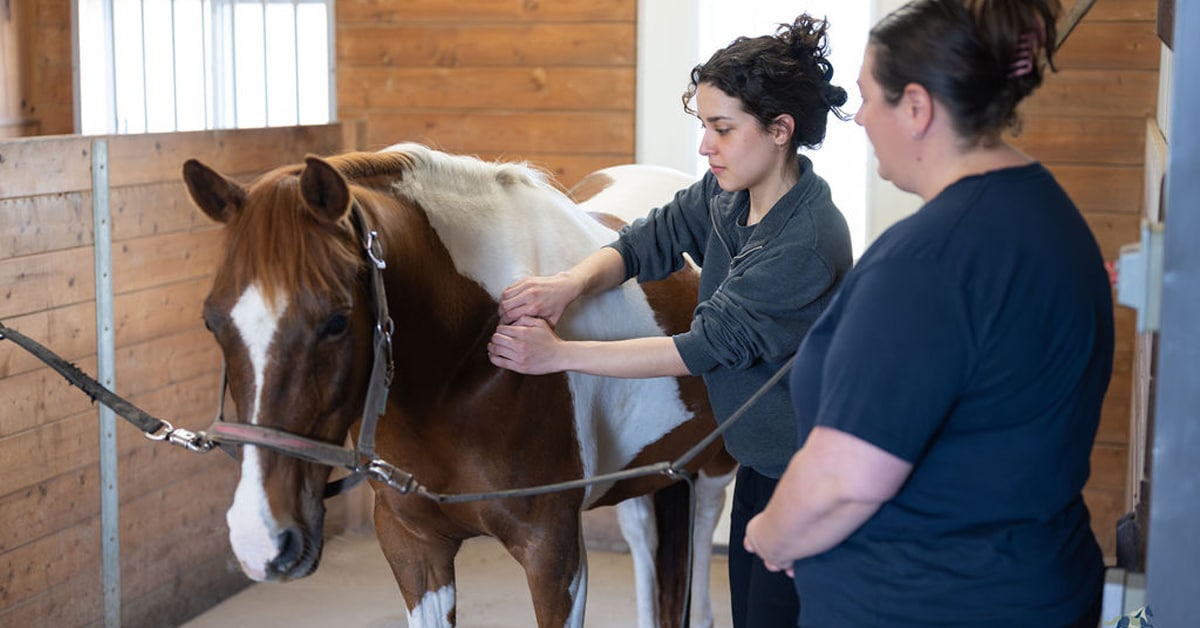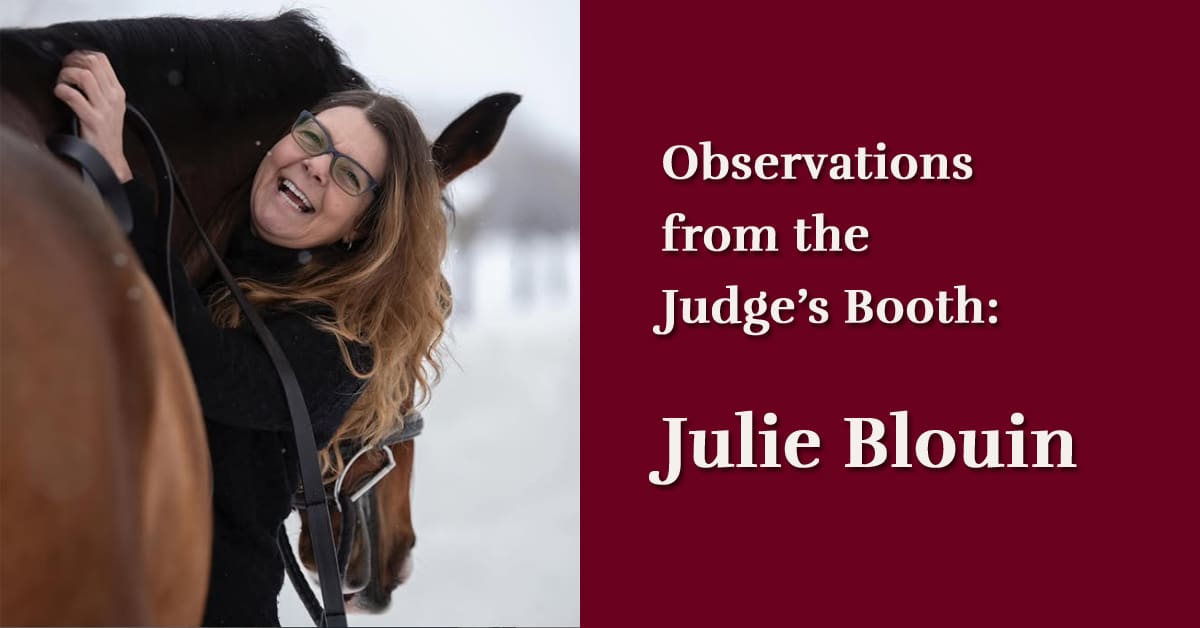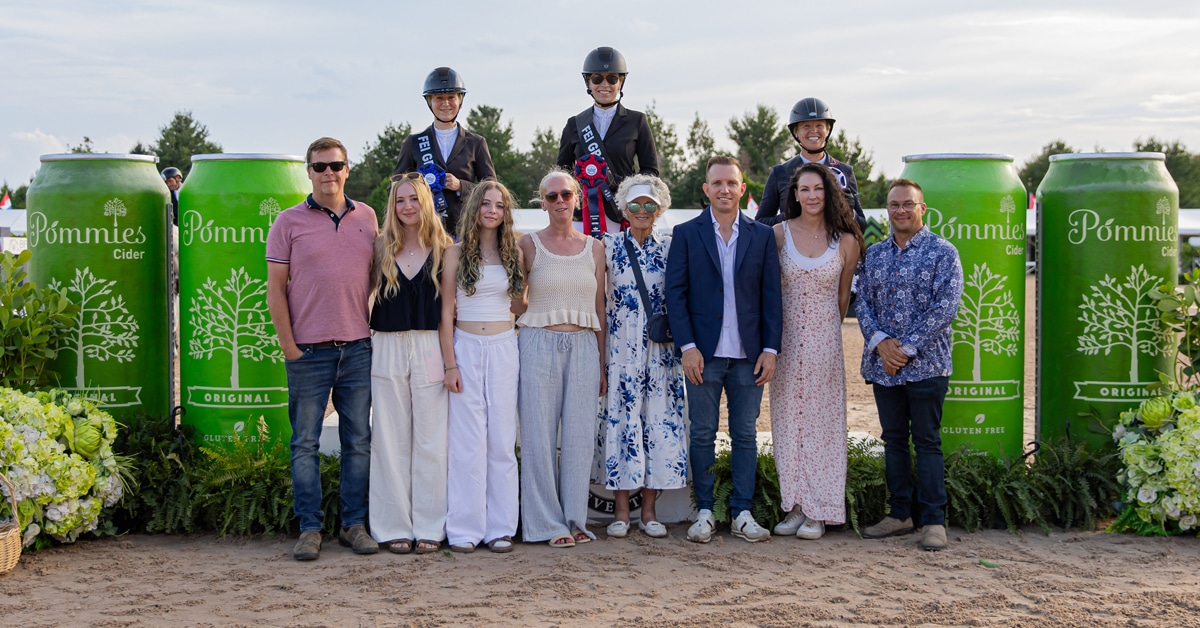Julie SalversonFour years after the devastating earthquake and tsunami that struck Japan, this enterprising writer/eventer journeyed to the region to discover what happened to the horses.
On March11, 2011, an earthquake off Japan’s northeast coast triggered a tsunami and a nuclear power plant accident that devastated the area. When Morag O’Hanlon (mother of Canadian eventer Selena O’Hanlon) heard about it, she organized a “Horses For Japan” fundraiser and sent $14,000 to that country through the Red Cross. When I joined the O’Hanlon Eventing barn later that spring, the fundraising signs were still up in the tack room.
I am a writer who studies how disasters bring out the worst and the best in people. In April of 2015, when I fly to Fukushima to learn about displaced persons and radiation, I have another, more private mission, inspired in part by Morag. I want to know what happened to the horses. As I will discover is typical of Japan, I do find horses, but not in the way I expect.
The shifting definition of normal
Most people were evacuated from the exclusion zone – the 20-km distance from the Daiichi Nuclear Power Plant where radiation levels are unsafe. But Matsumura Naoto is a farmer who stayed behind to care for horses and other animals, including two ostriches. Before I leave Ontario, I send emails trying to find him and receive a confusion of responses: “Too many permits. Do you really want to go there? There could be a lot of radiation.” Aya, my Japanese friend and translator, is in her 30s and not willing to risk going into the exclusion zone. She’s smart, I think. Maybe I should be smart too.
On April 8th I arrive in Fukushima City, 62 miles northwest of the Daiichi plant. I ask an agriculture worker, “Where is it safe for horses to graze?”
“Depends,” he says.
That is the answer to everything here. The day after March 11, the government raised the levels of the atomic substance cesium considered safe in food products. It seems that every week here there is a new normal. I meet a grandmother whose daughter has moved to Tokyo and is afraid to have the grandchildren visit. This is a huge deal. In Japan, everything is about the value of ancestors.
We have brought our own Geiger counter and the levels are higher than we had anticipated. Aya is nervous. Workers from the contaminated Daiichi plant stay in our hotel and they wear their boots. Radiation levels are highest on the ground. I keep my boots in the hallway (when I leave Japan, I leave my boots behind). Following instructions, I keep ‘outdoor’ clothing in the closet and don’t let my bare feet touch anything but the bathtub.
Nobody can tell me anything about horses.
National treasure
On April 12 we pick up a rental car and head out of Fukushima for the Iwate coast. The Daiichi plant is right in the middle of the coastline in Fukushima prefecture (which is like a province in Canada). The entire area was devastated on March 11. “We have to stop at Tono,” says Aya. “There is a house where humans and horses live together!”
Tono is a small town surrounded by rice fields. It is famous for Japanese folk legends and horses. In the small museum there is a series of paintings of the girl who fell in love with a horse. The couple married and kept their secret until one day her father discovered them and hung the stallion from a mulberry tree. The daughter clung sobbing to her husband until the father flew at them with an axe. As he swung to sever the horse’s head, bride and groom disappeared into the sky.
“This is all very well,” I tell Aya, “but I want to find a living horse!”
As we drive out of Tono I scan the surrounding hills, but the only four-legged creature I see is a black cow. We drive up a hill to an L-shaped stone building with a thatched roof. “Here, the horses live on one side, the people on the other.” Aya is convinced that one horse still remains at Chiba House, a cultural site since 2007. She is wrong. The stall is empty and silent. I sigh. This isn’t looking good.
The barn is a bit sad: unlabeled equipment, brushes, broken bridles. As we turn to leave we hear a voice: “Hello!” A short older man in a dark jacket and black cap tells us the grounds are about to close. As he walks away I whisper to Aya. “Ask him about the horses. Please?”
It is unforgivable in Japan to hurry someone, but Aya follows the man. “Sumimasen.” Excuse me? She says something more in Japanese. He spins around, a broad grin filling his face. He speaks rapidly, moves to the stall, climbs around the broken boards and digs for something. He pulls out a dusty framed black-and-white photograph. Behind the glass, a stocky dark bay horse stands with ears forward, his intelligent face watching the photographer. A white ring circling the front hoofs balances the white on his back legs. He has a tiny star on his forehead.
“This is famous horse. Battle horse. Special horse. National treasure! When this horse arrived, this house had good fortune. People could understand the gift he was. This horse? Happens once every fifty years.”
The man, Kikuchi Itaru, manages Chiba House. He searches for a certificate, shakes off the dust. “Look, big prize he won! 1957! National prize!” I ask what the horse did to win it. “Everything,” he says smiling. “War horse. Judged for shape, work, many movements. Good persuasion!”
Mr. Kikuchi studied animal nutrition in university, so I ask about the radiation around Tono. Most contaminants are found close to the ground and is the reason people can’t eat mountain vegetables such as mushrooms. “There is contamination,” he says. “People have to buy hay from away. It takes a long time for contamination to go away.”
I ask if I can take a photo of this horse. He puts on white gloves and lovingly cleans the glass while talking. I madly scribble everything that Aya translates.
Mr. Kikuchi used to be a judge. “I just look and I know.” I show him a photo of Henry, my bay-and-white Paint. He peers carefully into my iPhone. “I look at the ears. Forward. I see texture and balance. Have to be careful if the balance isn’t right.” He smiles at the photo. “Kind horse. He will persevere.” He studies me carefully. “Before you train horse you have to train person. Lots of suffering, this training. But it pays off.” I think about my riding lessons with O’Hanlon Eventing. Morag would like this man.
We say goodbye, thank you, thank you. Much bowing. As we get to the car I remember something and run back. “Mr. Kikuchi! What’s his name?” I point to my iPhone, “Henry!” and to the bay in the photo. The man nods, and draws three small characters on my notebook.
Honouring the spirits of ancestors
The next morning Aya finds a riding school and books me a lesson. We drive up a long hill by a racetrack and stop at a washroom with horse ears sculpted into the roof. A young woman greets us in rubber boots and breeches. “Uma no sato,” roughly translated “home village of horses,” has been operating for years and is largely funded by the local government.
Kyoko has been a groom and teacher here for 17 years. After the tsunami, the school took their ponies to the coast for children to ride. Kyoko shows us a barn for “grandparents.” I pose for a photo with Candy, 27, a white mare. There are over 50 horses here, but after I return to Canada I hear from Aya that since March 11, 2011, thirty-five horses at another area barn have died. The people at the barn tell Aya that horses are particularly vulnerable to radiation. Their deaths are difficult.
I don’t know what happens to my lesson, but in Japan one surprise is exchanged for another. I ask what Kyoko loves most about her job. “First thing in the morning. Cleaning the shit.” Her joy is tempered by not having her own horse. I tell her I got Henry when I was 57. “Oh!” she says. “Well, someday then.”
As we drive to the coast, I think about the story of the girl who fell in love with a horse. In his book The Legends of Tono, Kunio Yanagita writes that this part of Japan contains two worlds. One is the observed – mountains and rivers, houses and place names. Then there is “the concealed world, where spirits and gods come and go with ease.” Crossing between, and most important to all Japanese, there are the ancestors. Families stayed in Fukushima after the accident to tend the graves of their elders. Villagers are rebuilding this coast after the tsunami because, even though another will arrive someday, they must stay in the place where their grandparents and great grandparents lived. Without ancestors, you have no story.
I look at my photo of the great bay gelding. I think of Mr. Kikuchi wiping away the dust from the photograph. The barn of grandparents at the riding school. Spirits of ancestors must be honoured. They have things to teach us.
When I get back to Canada, I take a photo of the Japanese characters Mr. Kikuchi drew in my notebook and send the picture to Aya. She emails back, “His name is Tomio.” The horse of good fortune. The ancestor horse.
A Heartbreaking Scenario
- The 9.0 earthquake off the Pacific coast of Tõhoku spawned a powerful tsunami with waves reaching up to 40.5 metres and travelling up to 10 km inland.
- The disaster was responsible for 15,893 deaths, 6,152 injured, and 2,572 still missing.
- The earthquake actually shifted the Earth’s axis by an estimated 10-25 cm
- Approximately one million head of livestock (including horses) died due to the tsunami, including 75 riding horses in the Miyagi, Fukushima, and Tochigi prefectures.
- Tens of thousands of livestock and household pets had to be left behind in the rush to get out of the devastated areas.
- Fukushima residents who were forced to evacuate thought they would only be gone for one night, locking horses and cows in stables and dogs and cats in their homes. They were not allowed to return for weeks and their animals slowly starved to death.
- Many of the affected area’s racehorses were evacuated within days after the quake due to their value, while other horse owners were prevented from returning to the restricted area to feed and care for their animals.
- Yoju Matsubayashi produced a documentary film “The Horses of Fukushima” detailing the fate of the lucky – and not so lucky – horses within the 20-km restricted zone.matsurinouma.com/en/
The Latest









